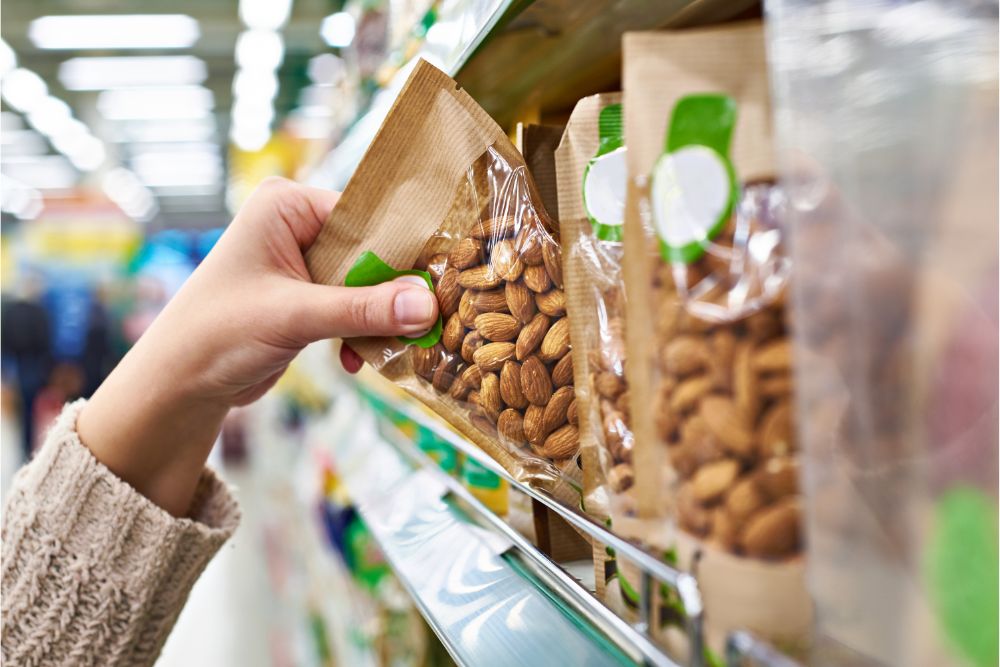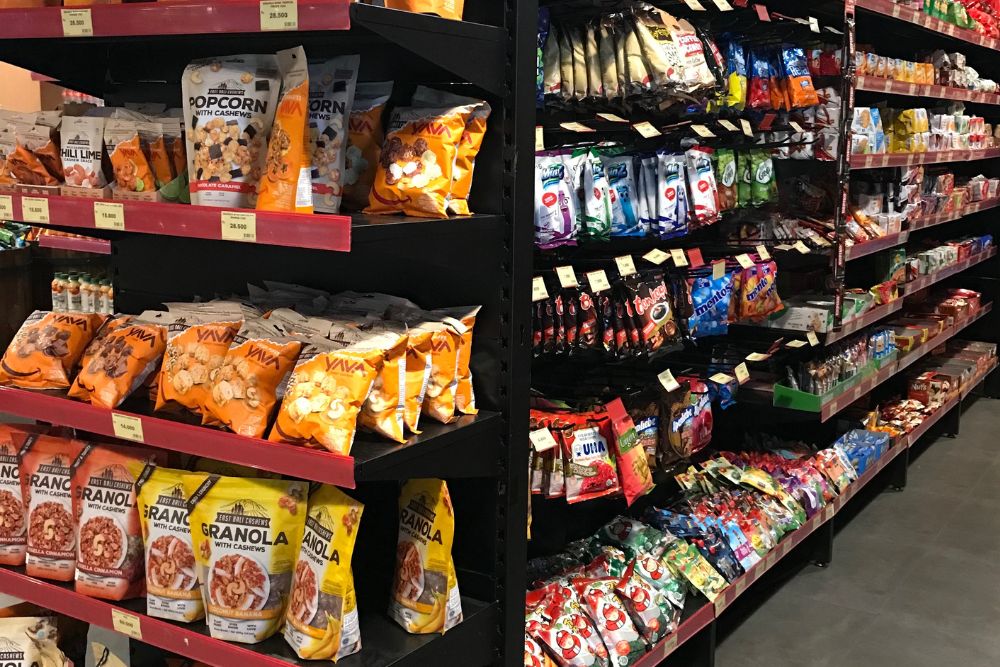Key Takeaways
- Food-grade plastic bags protect your products from the elements, prevent spoilage, and preserve freshness to extend shelf life.
- Different food types require different types of plastics.
- Safety features, like tamper-evident seals, protect food quality.
- Bags must meet FDA regulations for safe food contact.
- The right bag boosts product appearance and brand awareness.
Think about the moment someone opens your product. The smell, the crunch, the first bite. Great taste starts with your recipe, but lasts because of your packaging. Food-grade plastic bags seal in freshness and flavor, keeping every bite as good as the day it was packed.
Packaging for Freshness
Packaging is the first promise you make to a customer, showing them your food is safe, clean, and worth tasting. But how are packaged foods kept fresh? Behind every glossy finish or resealable zipper, there’s science-based research at work, balancing oxygen, moisture, and light to keep food tasting just-packed.
10 Ways Plastic Packaging Keeps Food Fresh
Plastic packaging maintains food freshness through a mix of science and design.
Barrier Protection: High-barrier plastics lock out oxygen, moisture, and gases that dull flavor or soften crunch. Think of it as a microscopic shield.
Extended Shelf Life: Multi-layer laminates and precision seals create a stable pocket of air, protecting taste and texture from factory to shelf.
Hygiene & Safety: Plastic packaging forms a sterile guard against dust, dirt, and microorganisms, reducing the risk of spoilage.
Modified Atmosphere Packaging (MAP): Some foods get their own “climate control.” MAP technology adjusts oxygen, carbon dioxide, and nitrogen levels to slow down spoilage and preserve natural flavor.
Moisture Control: The right films either block humidity or allow excess moisture to escape, keeping crackers crisp, snacks crunchy, and produce looking and tasting like it was just picked.
Temperature Control: Plastic materials provide light insulation, helping food maintain a consistent temperature during shipping and storage.
Light Protection: Opaque or UV-blocking materials protect light-sensitive products, like dairy and coffee, from losing nutrients and flavor.
Tamper-Evidence Features: Seals, closures, and other safety features keep contaminants out and freshness in.
Portion Control: Single-serve pouches and multipacks limit air exposure after opening, keeping the rest fresh for later.
Convenience Features: Easy-open tear notches, resealable zippers, and spouts make food more accessible and easier for your customers to use, increasing their lifetime value.
Types of Plastic Bags for Food Packaging
Not all plastics behave the same way, as each material has its strengths. The right one depends on your product’s needs, whether it’s crunchy, oily, frozen, or aromatic.
- High-Density Polyethylene (HDPE) – Tough and dependable. You’ll find it in heavy-duty food liners, sugar sacks, and bulk coffee bags, anywhere durability and oil resistance matter.
- Low-Density Polyethylene (LDPE) – The softer side of plastic. Perfect for bakery wraps, snack packs, or frozen foods that need easy sealing and flexibility.
- Polypropylene (PP) – Crystal clear and crisp. Great for showing off your product, like stand-up coffee bags that want to look as good as they taste.
Packaging That Attracts Customer Attention
Besides protecting your product, packaging is your first and loudest sales rep. On a crowded shelf, your bag has to shout “pick me” so your ideal customer chooses you over the one next to it on the shelf. Custom-printed films turn your product into a mini billboard, capturing attention so you are the one they take home.
Get a sneak peek and order a free sample from RubeeFlex Packaging, so you can experience how our food-grade plastic pouches perform before committing to a full order.

What Makes Plastic Bags and Pouches Food-Grade?
Food-grade isn’t a buzzword. It’s a standard these plastics have to meet; they’re tested and certified to stay safe when in contact with food, without leaching chemicals or odors.
In the U.S., this means the materials comply with FDA regulations under Title 21 of the Code of Federal Regulations (CFR), the rulebook that keeps your packaging (and your reputation) clean.
Materials like polyethylene (PE) and polypropylene (PP) are go-to choices because they’re strong and stable, from heat-seal to deep-freeze. To earn the “food-grade” label, packaging materials must:
- Stay stable and non-reactive in contact with food.
- Withstand standard processing and storage conditions.
- Be produced and printed in hygienic, contamination-free facilities.
Choosing a supplier that adheres to FDA food-contact standards guarantees every custom packaging bag you deliver is safe, compliant, and ready for the shelf.
Packaging for Freshness, the RubeeFlex Way
Ready to save money on spoilage and make money with eye-catching packaging? At RubeeFlex Packaging, our food-grade plastic bags help you deliver food that stays as good as the day it was packed, so the people who chose you the first time choose you again and again (and tell their friends about you).

Get a free sample plus expert guidance on the best material and design for your product. Talk to a RubeeRep today to explore custom bags for food that look great and keep freshness sealed in from day one.

Food-Grade Plastic Bags FAQs
How long does food last in food-grade plastic packaging?
The shelf life of food in food-grade plastic packaging depends on the type of food, storage conditions, and bag quality. Dry goods like nuts, grains, and snacks can last several months when stored in sealed, food-grade bags at room temperature.
What types of spoilage affect packaged foods?
Packaged foods spoil in three main ways:
- Microbial: bacteria, mold, or yeast growth.
- Chemical: changes like oxidation or rancidity.
- Physical: damage from moisture, light, or temperature.
Are all plastic bags safe for food storage?
No, not all bags are safe for food storage. Only bags specifically labeled as food-grade are tested and approved for direct contact, meeting FDA standards.
Does food-grade plastic packaging affect taste or smell?
Food-grade plastic is odor-free and made to preserve your food’s natural taste and smell.
What does BPA-free mean?
“BPA-free” means the packaging materials are made without Bisphenol A, a harmful chemical that leaches into food or beverages, especially when heated.

